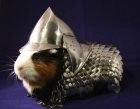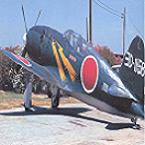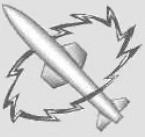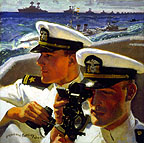Grit
Posts: 142
Joined: 4/7/2010
Status: offline

|
quote:
ORIGINAL: TheElf
Some notable figures for those who think B-29 raids are underrepresented. Note the interval between missions. Note the variation in Raid size. If you average these raids the average sortie per raid is 186 B-29s. Raids of 300+ B-29s were an outlier.
* 19 February 1945: 119 B-29s hit port and urban area
* 25 February 1945: 174 B-29s dropping incendiaries destroy ~28,000 buildings
* 4 March 1945: 159 B-29s hit urban area
* 10 March 1945: 334 B-29s dropping incendiaries destroy ~267,000 buildings; ~25% of city (Operation Meetinghouse) killing some 100,000 civilians
* 2 April 1945: >100 B-29s bomb the Nakajima aircraft factory
* 3 April 1945: 68 B-29s bomb the Koizumi aircraft factory and urban areas in Tokyo
* 7 April 1945: 101 B-29s bomb the Nakajima aircraft factory.
* 13 April 1945: 327 B-29s bomb the arsenal area
* 15 April 1945: 109 B-29s hit urban area
* 24 May 1945: 520 B-29s bomb urban-industrial area south of the Imperial Palace
* 26 May 1945: 464 B-29s bomb urban area immediately south of the Imperial Palace
* 20 July 1945: 1 B-29 drops a Pumpkin bomb
Pumpkin bomb
"Pumpkin bombs" were conventional high explosive aerial bombs developed by the Manhattan Project and used by the United States Army Air Forces against Japan during World War II. The name "pumpkin bomb" resulted from the large ellipsoidal shape of the munition and was the actual reference term used...
(bomb with same ballistics as nuclear bomb) through overcast aiming at but missing the Imperial Palace
* 8 August 1945: ~60 B-29s bomb the aircraft factory and arsenal
* 10 August 1945: 70 B-29s bomb the arsenal complex
Great information, thanks.
Here is some more info that talks about the 10 days in March of incendiaries being dropped on several different cities. Can this be reproduced in AE? From what I've read most guys say they can't do this and their losses are much heavier. Are we doing something wrong? Is it possible to run 10 straight days of very large B-29 raids over Japan?
LeMay decided that Tokyo would be the first target for a massive raid on Japan itself. The raid was planned for the night of March 10th and the B-29’s were to fly at between 5,000 and 8,000 feet. As Japan was not expected to send up night fighters, the guns from the planes were taken off as was anything that was deemed not useful to the raid. By effectively stripping the plane of non-essentials, more bombs could be carried for the raid. Along with Tokyo, Kobe, Osaka and Nagoya were also targeted. As each had flourishing cottage industries that fed the factories of each city, LeMay hoped to starve these factories of required parts. He also hoped that the fires that would be started would also destroy the larger factories as well. As the target for the raid was so large – a city area – the B-29’s did not have to fly in strict formation, especially as little resistance was expected from the Japanese.
The incendiary bombs dropped were known as M-69’s. These weighed just 6 lbs each and were dropped in a cluster of 38 within a container. One B-29 usually carried 37 of these containers, which equated to just over 1,400 bombs per plane. The bombs were set free from the container at 5,000 feet by a time fuse and then exploded on contact with the ground. When they did this, they spread a jelly-petrol compound that was highly inflammable.
For the attack on Tokyo, over 300 B-29’s were involved. They took off for a flight that would get them to Tokyo just before dawn, thus giving them the cover of darkness, but with daylight for the return journey to the Marianas. They flew at 7,000 feet. This in itself may have baffled the city’s defenders as they would have been used to the B-29’s flying at 30,000 feet.
The raid had a massive impact on Tokyo. Photo-reconnaissance showed that 16 square miles of the city had been destroyed. Sixteen major factories – ironically scheduled for a future daylight raid – were destroyed along with many cottage industries. In parts of the city, the fires joined up to create a firestorm. The fires burned so fiercely and they consumed so much oxygen, that people in the locality suffocated. It is thought that 100,000 people were killed in the raid and another 100,000 injured. The Americans lost 14 B-29’s; under the 5% rate of loss that was considered to be ‘acceptable’.
On March 12th, a similar raid took place on Nagoya. The raid was less successful as the fires did not join up and just over 1 square mile of the city was destroyed. On March 13th, Osaka was attacked. Eight square miles of the city were destroyed. Nearly 2.5 square miles of Kobe was also destroyed by incendiary raids. In the space of ten days, the Americans had dropped nearly 9,500 tons of incendiaries on Japanese cities and destroyed 29 square miles of what was considered to be important industrial land.
Few men who flew on the raids felt that what they did was immoral. The Japanese treatment of prisoners and civilians in its occupied zones was all too well known to the flight crews and many felt that the Japanese had brought such attacks on themselves. The incendiary raids were carried out at night and the chance of a crew returning from such a raid was high. Only 22 bombers were lost in this ten-day period – an overall loss of 1.4%. If crews needed to land early, they could do so at Iwo Jima and the return flight to the Marianas was covered by ‘Dumbos’ and ‘Superdumbos’ – polite nicknames for the planes that escorted back the B-29’s and provided lifeboats for them if they had to ditch in the sea. These planes, usually Catalina’s and B-17’s, also radioed ahead the position of crews that had ditched in the sea and ships could picked them up with due speed.
LeMay was highly impressed with the destructive results of the raids – as were the Joint Chiefs-of-Staff. For the Japanese government, the raids must have brought huge despair as they had no way of fighting back and it was obvious to all civilians who knew about the raids, that Japan was defenceless against them.
< Message edited by Grit -- 4/28/2010 1:09:28 PM >
_____________________________
|
 Printable Version
Printable Version























 New Messages
New Messages No New Messages
No New Messages Hot Topic w/ New Messages
Hot Topic w/ New Messages Hot Topic w/o New Messages
Hot Topic w/o New Messages Locked w/ New Messages
Locked w/ New Messages Locked w/o New Messages
Locked w/o New Messages Post New Thread
Post New Thread